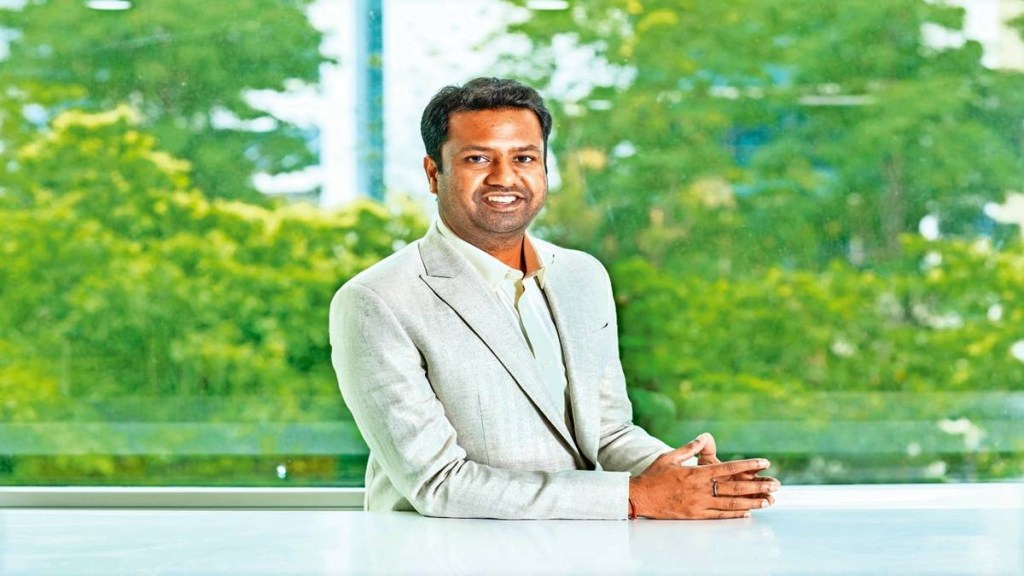Crypto unicorn CoinSwitch started in 2017 with only one product, its retail app. Today, it offers a suite of products, including a trading platform for traders, white glove services for HNIs, algo and API based trading, futures and options in rupee and more. The company will continue to innovate on products to serve the market, Ashish Singhal, co-founder, CoinSwitch, tells S Shanthi. Excerpts:
In the recent past, some notable crypto startups have undergone losses due to hacks. What measures are you taking to avoid such losses?
I think we have worked a lot on our safety and security measures at the back-end over the last few years. It is something we never compromise on. User trust is the foundation of this industry. We use enterprise-grade custody, multi-party computation, robust engines, strict identity and withdrawal checks. We also work closely with some of the most credible global security partners to continuously test and strengthen our systems.
Tell us about CoinSwitch Cares Recovery Plan.
The CoinSwitch Cares Recovery Programme is a Rs 600-crore initiative designed to support affected WazirX users and reinforce trust in the digital asset ecosystem. Through this programme, we have been helping eligible users recover a portion of their assets. For us, Cares is not just a compensation effort, it is our commitment to responsible industry leadership.
What are your growth plans for the next 12 months?
CoinSwitch touched 2.5 million users earlier this year. This was possible because we built products relevant to our users. When we started in 2017, we had only one product, which was our retail app. But now we have a suite of products, including a trading platform for traders, white glove services for HNIs, algo and API based trading, futures and options in rupee and more. We will continue to innovate on products to serve the market. A few big launches are in the works, but it will be too early for us to talk about them.
Your parent entity Chain Labs reported a net loss of $37.6 million in FY25 from $18.1 million in FY24. How do you plan to make up for it in FY26?
As of the latest quarter (Q2 FY26) we are profitable at a group level, which is a clear reflection of our discipline in scaling sustainably while preparing for the next phase of growth. The loss reflected in our consolidated financials of last year (March 2025) is the outcome of strategic, long-term investments into new growth verticals. These are deliberate decisions aimed at building future-ready businesses.
How have you been navigating the regulatory challenges in the sector?
Crypto regulation in India has definitely come a long way. We have moved from a phase of complete uncertainty to emerging clarity. The 2022 tax framework has brought clarity, but the current structure, 30% tax and 1% TDS, has made regular investing difficult, especially for retail users. A small change here could make a big difference. For example, reducing TDS from 1% to 0.01% and raising the threshold to Rs 5 lakh would still ensure transparency and tracking, but without creating friction for everyday investors.
Has market pessimism towards crypto startups changed in the recent past?
Yes, the sentiment has definitely improved. Earlier, a lot of the pessimism came from the hype cycle bursting and global uncertainty; people saw prices fall and assumed the industry itself was failing. But now, investors have become more informed. They are able to tell the difference between noise and real value. Adoption of crypto is growing rapidly. We now have over 700 million crypto owners, 181 million monthly active addresses and 40-70 million monthly active users of crypto. Some of the world’s largest financial institutions, including BlackRock, Stripe and Mastercard, are adopting crypto. Regulatory clarity is emerging across the world. This shift is healthy, and it is what will drive the next phase of growth.
As a key player in the sector, how do you look at the funding scenario for the sector?
With all the tailwinds that are helping the crypto ecosystem grow, funding is back on track for crypto startups. Funding for crypto has hit $19 billion in 2025, with 27 companies raising $2.5 billion in October alone.
As an investor in the space, what do you think are some of the segments within crypto that have been able to navigate the ups and downs effectively?
Mainly those that are solving real problems like on-chain custody and security, tokenisation platforms, and developer/data infrastructure. These are foundational layers that continue to see steady demand regardless of market cycles.

